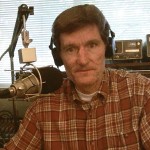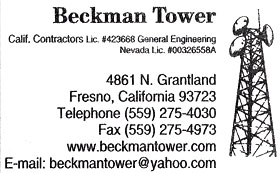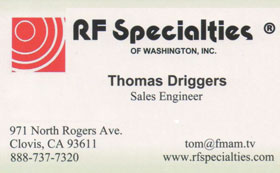I’m very sorry to report that John Lockhart has passed away. He was a great supporter of SBE66 activities, respected by all, and long-time broadcast engineer here in the Central Valley. Feel free to share any comments and memories on the link at the SBEE66 web page HERE:
Thanks to some unwanted computer updates this usually tardy Newsletter is later than usual but still in time to remind you all about the April meeting of the SBE66 Central Valley group on Thursday the 28th at the Clovis HomeTown Buffet. It’s our usual noontime lunch in the back banquet room. Pay as you enter and we’ll see you there.
I’ve been needing to drive into Southern California quite a bit lately and realize the pre-set buttons on my 20 year old vehicle still have some LA area AM radio stations parked on them. Handy for those traffic reports during their 18 hour-long freeway rush-hours. As many of you know this past October, the Federal Communications Commission proposed their AM Revitalization Plan, largely done to breathe some life into the AM radio band. Some of the proposed changes are not sitting too well with the owners of the most powerful, clear channel, Class A AM stations. The FCC accepted comments from licensees on the proposed changes through the end of last month. Some of the large market stations even started online petitions to try and stop the FCC from moving forward on these changes.
The FCC made six proposals which were:
1. Allowing some AM radio stations to purchase existing FM translators or FM translator construction permits. This includes having the purchased translators from other areas moved up to 250 miles to be within the AM station’s broadcast range. (This rule was already approved and has been in effect since the start of the year.)
2. Relaxing the FCC rule that states an AM station must cover 100% (or at least 80%) of the community of license. The proposed rule has it only covering a minimum of “either 50 percent of the population or 50 percent of the area of the community of license.”
3. Relaxing the rule that forces smaller AM radio stations to power way down or completely off at sundown to protect the signals of larger Class A radio stations. This is being proposed so the smaller (Class B through Class D) stations can continue to serve their communities at night. While a rule to completely eliminate nighttime restrictions on smaller stations has been suggested, that is not currently being proposed.
4. Eliminating the AM radio “ratchet rule,” which forced Class A or Class B AM stations to prove any change in their broadcast signal that had to be made would reduce radiation heading in the direction of some other AM stations, especially at night.
5. Allowing AM radio stations the ability to use Modulation Dependent Carrier Level (MDCL) technologies, allowing the station to reduce transmitter power consumption while maintaining audio quality and signal coverage. Any station using one of the two MDCL technologies will have to inform the FCC of the change within 10 days. Prior permission will not be required.
6. Reducing the FCC’s minimum efficiency standards for AM transmission systems by 25%. There also some consideration in potentially replacing those standards with a new minimum radiation standard.
Some of the concerns from the broadcasters to these proposals include:
Many have been calling out the FCC for turning a ‘blind-eye’ toward the ever rising noise level produced by many un-regulated devices that have raised the noise floor, and in the process, severely reduced the coverage of all AM Stations. The SBE has filed comments with the FCC regarding the ambient noise issue as well.
Some are suggesting that the lower powered AM’s be forced out, with perhaps the government buying them, thereby allowing the remaining AM’s to increase power, relax directional antenna systems etc. The thought here is that AM is still valid, but only if we return to the days of much fewer stations.
Others have proposed that AM’s be permitted a significant power increase. There are those that have proposed letting stations increase power at night.
The
proposal to further restrict the coverage of major, Class 1A stations at night has caused many of them to object.
Many of the Class A stations are Primary Entry Point (PEP) facilities, so there are possible EAS impacts involved.
There is a concern that there will not be enough FM Translators to go around and that this effort will not, in itself, resolve all the AM issues.
The FCC is finally getting pressure to require those that moved to the expanded AM band a few years ago to surrender one of their licenses (as they were originally asked to do).
Some have proposed that the AM band be shifted to all Digital, perhaps DRM. There were suggestions to bring back AM stereo.
Some asked for a provision to provide a migration path for AM to the spectrum adjacent to the present FM band where Low-Band VHF TV was until the switch to ATCS.
As the Central Valley AM spectrum is still quite active, it will be interesting to see what the FCC finally decides.



